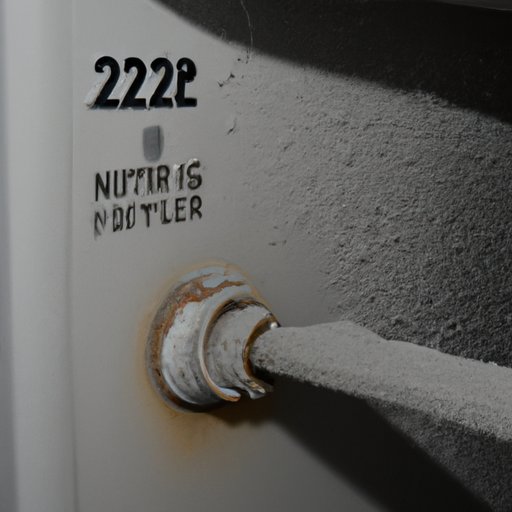Introduction
Have you ever opened the door of your freezer only to be greeted by a thick layer of frost on the walls and shelves? This is a common issue that many people have faced at one point or another. But what causes a freezer to frost up in the first place? In this article, we’ll explore the most common causes of freezer frosting and provide some tips for solving the problem.
Excess Moisture in the Freezer
One of the most common causes of freezer frosting is excess moisture. When warm, moist air enters the freezer, it condenses on the walls and shelves and eventually turns into frost. This can happen if the door isn’t properly sealed, or if there are frequent door openings. It can also occur if the freezer is overloaded with food, which can reduce the airflow and increase the temperature inside the freezer.
To minimize excess moisture, make sure the door is properly sealed and limit the number of times you open the door. Also, keep the freezer organized and don’t overfill it with food, as this will allow air to circulate more freely.
Faulty Door Seals
If the door seal on your freezer is faulty, it can lead to frosting. A faulty seal can cause warm air to enter the freezer, which will then condense on the walls and shelves and turn into frost. To check if the seal is faulty, try placing a piece of paper between the door and the frame. If you can easily pull it out, then the seal is not working properly and needs to be replaced.
If you find that the seal is faulty, you should replace it as soon as possible. Make sure to buy a seal that is specifically designed for your model of freezer. This will ensure that it fits properly and seals the door tightly.
Temperature Settings
The temperature settings on your freezer can also affect how much frost builds up. If the temperature is set too low, it can cause excessive frosting. On the other hand, if the temperature is set too high, it can lead to increased energy consumption and food spoilage. The ideal temperature setting for a freezer is 0°F (-18°C).
To ensure that your freezer is set to the right temperature, use an appliance thermometer. Place it inside the freezer and wait a few hours. Then, compare the reading to the ideal temperature. If it’s too low, adjust the temperature accordingly.
Air Circulation
Poor air circulation can also contribute to frosting in the freezer. If the air isn’t able to move around freely, it can cause frost to build up on the walls and shelves. To improve air circulation, make sure the shelves and drawers in the freezer are arranged properly. Don’t block off any vents, and keep the freezer organized and uncluttered.
In addition, clean the coils on the back or bottom of the freezer regularly. This will help improve air circulation and reduce the amount of frost buildup.
Inadequate Defrost Cycles
Finally, inadequate defrost cycles can also lead to frosting in the freezer. If the defrost cycle isn’t running often enough, it can cause ice to build up on the walls and shelves, which will eventually turn into frost. To ensure that your freezer is running proper defrost cycles, check the manual for your model of freezer.
If the manual doesn’t specify how often the defrost cycle should run, you can manually initiate it yourself. To do this, simply turn off the power to the freezer and leave it off for a few hours. This will allow the ice to melt and the freezer to reset itself.
Conclusion
In conclusion, there are several common causes of freezer frosting, including excess moisture, faulty door seals, incorrect temperature settings, poor air circulation, and inadequate defrost cycles. To solve the problem, make sure the door is properly sealed and limit the number of times you open it. Also, set the temperature to the correct level and keep the freezer organized and uncluttered. Finally, check the manual for your model of freezer to see how often the defrost cycle should run.


